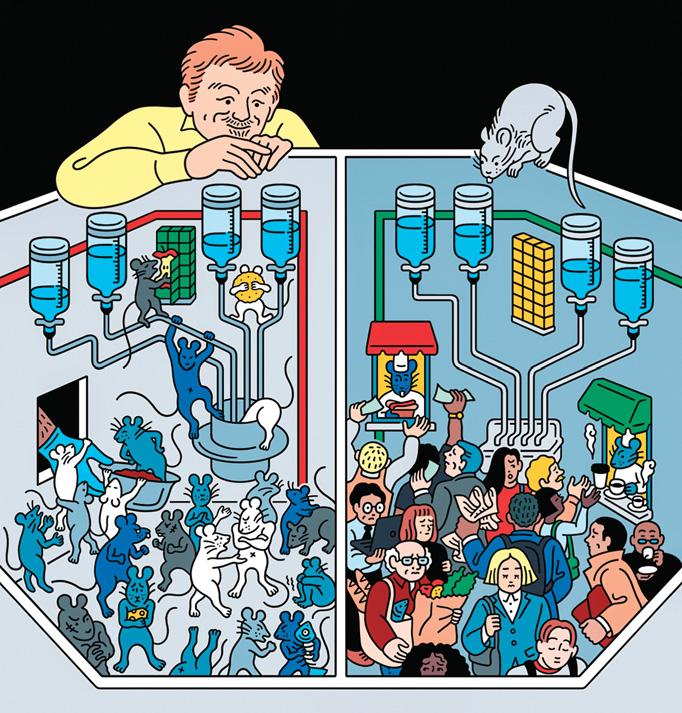
Ra Oats can't vomit. This may be a function of their anatomy-their stomachs are "not well structured for moving contents towards the esophagus" is how one study delicately put it--or it may have something to do with their brain circuitry, or it may be a combination of the two. Whatever the cause, the result is that rats, contrary to their popular (or unpopular) image, are fussy eaters. Even as they pick through the trash, they're hesitant to try new foods. This makes poisoning them complicated; quite often and quite literally-they won't take the bait.
In 1942, a Johns Hopkins biologist named Curt Richter discovered a new poison that rats apparently couldn't taste.
His breakthrough caught the attention of the United States Office of Scientific Research and Development, the Second World War equivalent of DARPA. The agency, among its many worries, feared that the Axis powers were at work on biological weapons that would use rats as vectors. (In fact, the Japanese did try to spread plague during the war, with some success.) The O.S.R.D. had the poison-alpha-naphthyl thiourea, or ANTU for short-tested in the back alleys of Baltimore. The city was so pleased with the resulting carnage that it appointed Richter to lead a new rodentcontrol office, based in City Hall. By 1946, ANTU-laced corn had been spread over more than fifty-five hundred blocks and, according to Richter, "well over a million rats" had been killed.
By that point, however, ANTU was starting to lose its efficacy. Apparently, rats were learning to associate adulterated corn with unpleasant consequences and becoming bait-shy. New measures, it was realized, would be needed, and an even more ambitious research effort was born-the Rodent Ecology Project.
This story is from the {{IssueName}} edition of {{MagazineName}}.
Start your 7-day Magzter GOLD free trial to access thousands of curated premium stories, and 9,000+ magazines and newspapers.
Already a subscriber ? Sign In
This story is from the {{IssueName}} edition of {{MagazineName}}.
Start your 7-day Magzter GOLD free trial to access thousands of curated premium stories, and 9,000+ magazines and newspapers.
Already a subscriber? Sign In

ART OF STONE
\"The Brutalist.\"

MOMMA MIA
Audra McDonald triumphs in \"Gypsy\" on Broadway.

INTERNATIONAL AFFAIRS
\"Black Doves,\" on Netflix.

NATURE STUDIES
Kyle Abraham's “Dear Lord, Make Me Beautiful.”

WHAT GOOD IS MORALITY?
Ask not just where it came from but what it does for us

THE SPOTIFY SYNDROME
What is the world's largest music-streaming platform really costing us?

THE LEPER - LEE CHANGDONG
. . . to survive, to hang on, waiting for the new world to dawn, what can you do but become a leper nobody in the world would deign to touch? - From \"Windy Evening,\" by Kim Seong-dong.

YOU WON'T GET FREE OF IT
Alice Munro's partner sexually abused her daughter. The harm ran through the work and the family.

TALK SENSE
How much sway does our language have over our thinking?

TO THE DETECTIVE INVESTIGATING MY MURDER
Dear Detective, I'm not dead, but a lot of people can't stand me. What I mean is that breathing is not an activity they want me to keep doing. What I mean is, they want to knock me off. My days are numbered.